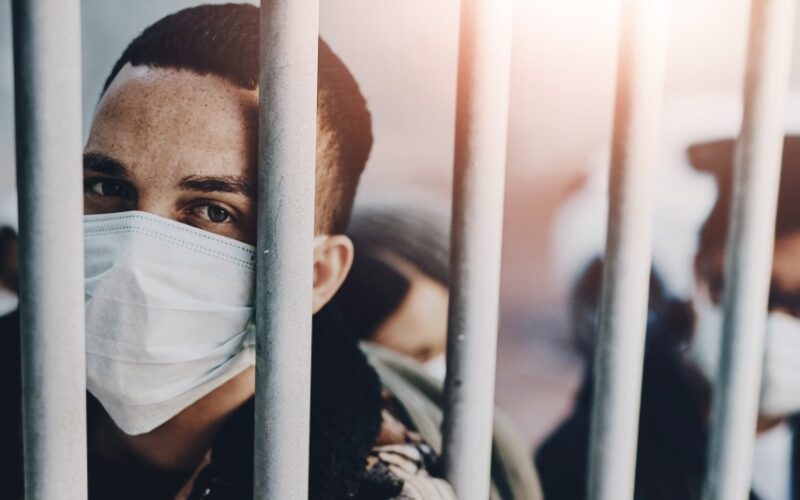The officials running New York’s city jails and state prisons were too slow to react to reduce their populations when the COVID pandemic erupted in March 2020, leaving a legacy of missed chances to blunt the spread of the disease behind bars, according to a new Legal Aid Society report looking back at the crisis.
Legal Aid argues in its report a business-as-usual approach to lockups caused COVID-19 to strike jails and prisons at a much higher rate than among the general public.
“By failing to assertively mitigate the risk the pandemic posed to people in the criminal legal system, city and state officials endangered the health and wellbeing of all New Yorkers,” said Alex Lesman, staff attorney with the society’s Special Litigation Unit.
As the pandemic mushroomed in early March 2020, the risk behind bars was immediately recognized. On March 12, 2020, a group of doctors working in the jails, clinics and shelters advised the city to release anyone over the age of 60.
The first COVID case in the jails was diagnosed six days later. Dr. Ross McDonald, head of Correctional Health Services, urged, “Please let out as many as you can.” Within a week, the city Board of Correction and even the United Nations High Commissioner for Human Rights offered similar advice.
Despite a period when Mayor de Blasio did order releases that dropped the jail population to its lowest in memory, that practice faded, according to the report.
The NYPD kept making low level arrests, sending people to Rikers Island, and prosecutors kept pressing for bail and judges kept setting it.
AP
Rikers Island (AP Photo/Seth Wenig, File)
A rollback of bail reform in 2020 contributed to more people going to jail. A de Blasio work release program generated too few releases, the report said.
As of April 2020, the percentage of people infected with the virus in the jails was eight times that of the city as a whole.
By that May, correction officers had been diagnosed with the disease at a rate five times higher than the city’s average.
The impact disproportionately fell on people of color, who make up 86% of the jail population and 84% of correction officers.
In March 2020, the jail population was about 5,500. It dropped to less than 3,809 by April 29, but by July 2021 it had creeped inexorably upward again to about 6,000, the report said.
At the state level, Gov. Cuomo’s expedited release program didn’t reach enough people because of red tape. Cuomo, and later Gov. Hochul didn’t use their power to release older and vulnerable prisoners as much as they could have, the report said.
And too many parolees were sent back to prison for violating technical rules of parole, the report said.
State prison officials also didn’t disclose the number of people who contracted the illness for the first six weeks of the pandemic. When the data was finally released, it showed 211 people in custody had tested positive along with 794 employees. Six people had died.
By then, the report said, the prisons had done just 350 COVID tests in a population of about 40,000 inmates.
This suggests, the report said, “the reported numbers represented only a fraction of the real prevalence of disease in the prisons.”
The authors of the report proposed a range of recommendations, including caution in the future in continuing to send people to jail on less serious offenses in the midst of a public health crisis and passing legislation that expands parole, especially parole for medical reasons.
Representatives for Mayor Adams and Gov. Hochul did not immediately reply to requests for comment.








